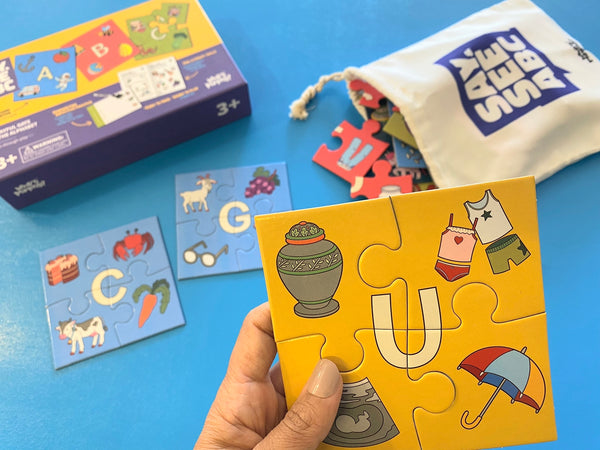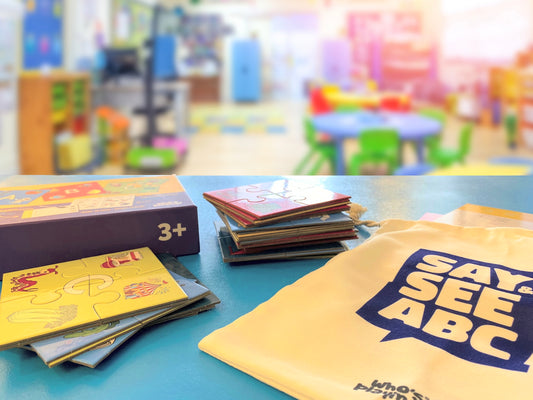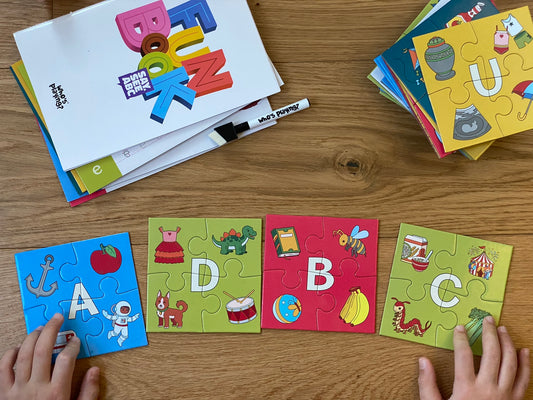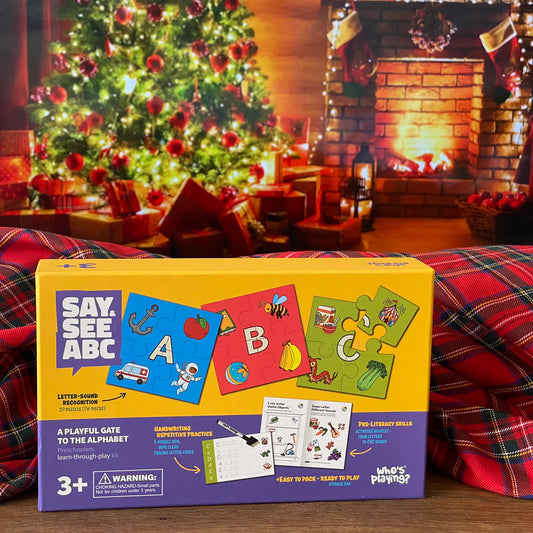To ease letter sound recognition, put aside the hard C, hard G and short U puzzles.
Listed below, are a few ideas for such class activities. At the beginning of each game, read the game rhymes and verify that the children understand the matching sound principle (best is to demonstrate it with one of the puzzles).

* Walking Puzzles: Turn the children into walking puzzle pieces – each child gets a single piece of a puzzle and needs to find 3 more children with pieces of matching initial sounds, in order to complete the puzzle.
* Class Poster: Divide the children into groups and give each group a few of the puzzles (we recommend following the ColorKey, as explained in the Kit’s FunBook). After the children complete their puzzles, take a photo of each letter (or better, with the parent’s permission, take photos of the children with each letter they found). Later use these photos to create your unique Alphabet poster. Hang it on the class wall and make your young students proud of themselves.

* Quartets: Play quartets: Use the puzzle pieces as cards. Give each group of children a few puzzles, and follow the rules of the known quartets’ game.

Turning the puzzles into a quartet game played in class or even at home.
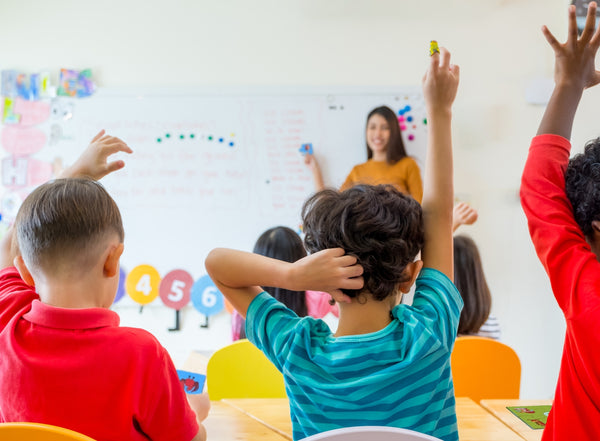
This is so fun! Get ready to play it again and again.
Divide them equally (and randomly) among the children (better work in groups of 3-6 children). At each round, you show your class one of the puzzle pieces in your hand. Groups that have matching pieces, send them with their representor to you, and they match the puzzle together on your desk, and if correct, a new round starts (if not, all 3 return with the pieces back to their group, and your piece will be drowned for another try later. The group that is the first to remain with no pieces at all is the winner of the game.
Do not rush these activities, let the children argue among themselves, explain, and convince each other. Yes, it may get noisy, but this is the sound of active learning. We love it. Try it, and you may love it too!


